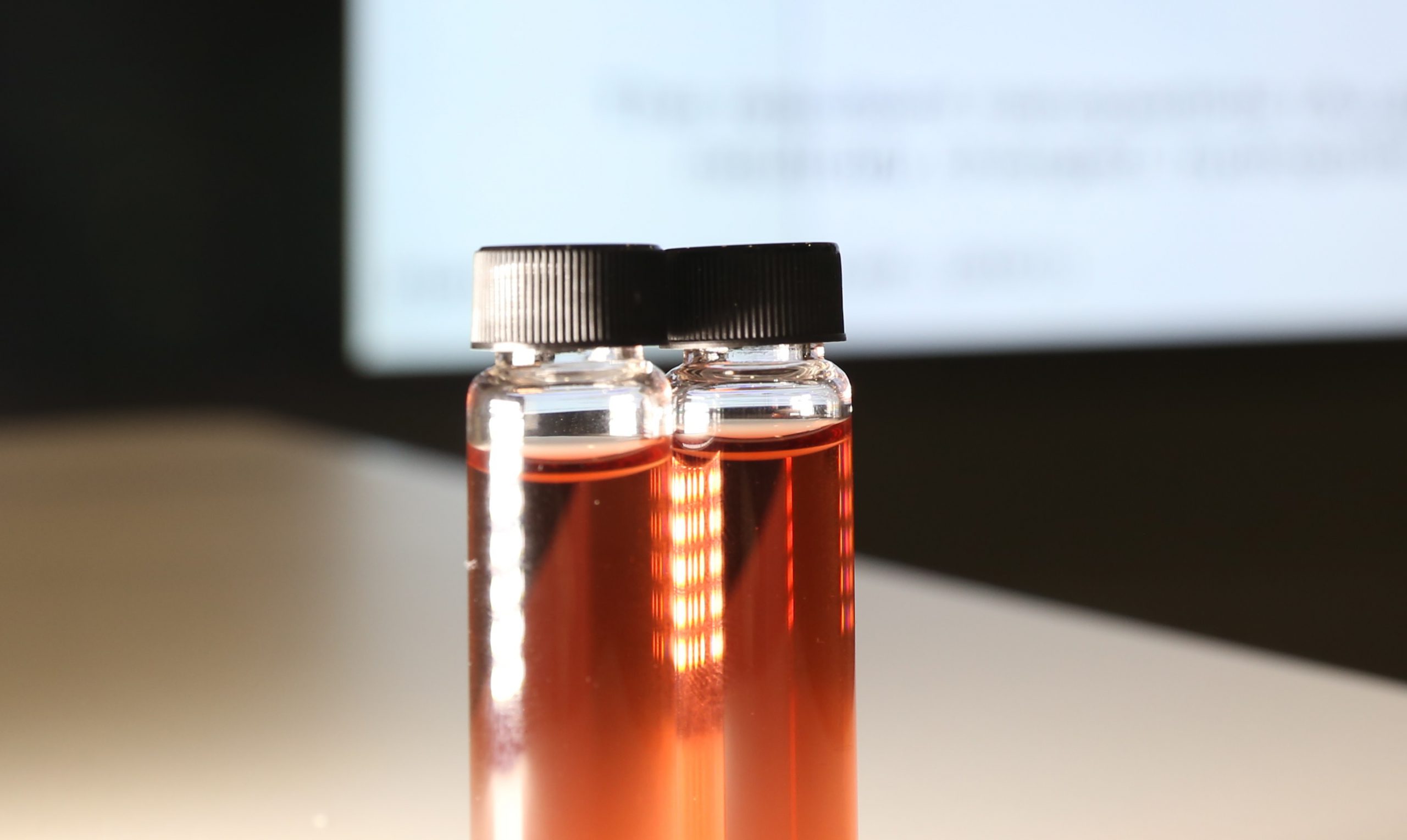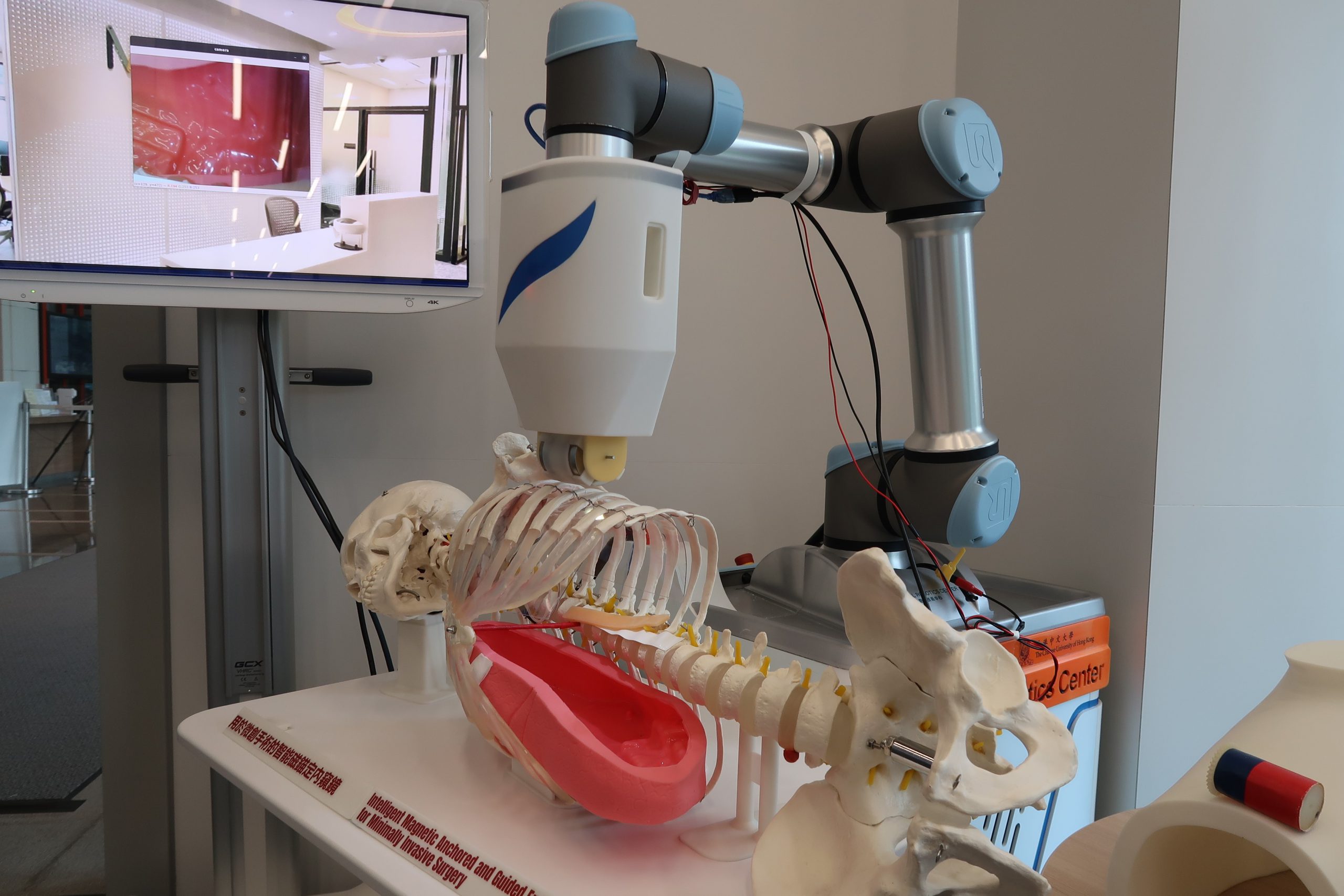For millions of people who are unlucky enough to suffer from devastating injuries to areas of the body such as the spinal cord, and debilitating medical conditions including strokes, physical therapy is a critical part of the journey along the road to recovery. However, most available physical therapy only involves so-called passive training – building up the muscles through physical activity alone, with no retraining of the brain to communicate with those muscles more effectively.
Now, thanks to a new invention, there’s the possibility that these patients could acquire superpower like Spider-Man’s nemesis Doctor Octopus, who has psychokinetic control over artificial tentacle arms. ExoMuscle, created by a team led by Professor Raymond Tong Kai-yu, Department of Biomedical Engineering, The Chinese University of Hong Kong (CUHK), is a wearable artificial muscle that connects the brain and muscles to each other, speeding recovery. This novel invention was awarded the Gold Medal with the Congratulations of the Jury and special prize at the International Exhibition of Inventions Geneva 2023.

The power of ExoMuscle: twice as strong as human muscles
Like the powerful arms of Doctor Octopus that can lift several tons, making him a formidable rival to Spider-Man, ExoMuscle packs quite a punch. In fact, it’s the world’s most powerful artificial muscle in terms of stress, strain, power density and efficiency. It’s twice as strong as human muscles and can support weights of up to 20kg. That’s the result of a design inspired by the behaviour of human skeletal muscle – specifically an area of muscles where filaments cross each other, so that the overlapping parts generate contractile motion. ExoMuscle mimics this mechanism on a macro scale by winding nylon filaments with a biological tissue-like pattern around specially designed tubes. This ground-breaking artificial muscle boasts unparalleled energy conversion efficiency, impressive force and a powerful contraction ratio.
In addition to its strength, ExoMuscle is also light as a feather, thin as a whisper and comfortable as a second skin. It is made from lightweight silicone, which is completely safe to use, with an inflatable rubber tube inside it used to simulate the contraction of muscles. It can be used by patients on their own, at home, alleviating the need for medical settings and easing the pressure on rehabilitation professionals such as physiotherapists. From hands to ankles, and from wrists to shoulders, ExoMuscle is an exciting tool in the battle against physical adversity.

ExoMuscle’s unique brain computer interface (BCI) connects the brain and muscles for faster recovery
ExoMuscle interfaces directly with the brain, reading and interpreting the signals it sends to muscles. This gives users assistance in moving various parts of their bodies, training both the brain to issue commands and the muscles to respond to them.
“The interface comprises three main components: an Electroencephalogram/Electromyography (EEG/EMG) amplifier that collects brain and muscle signals from the user; the ExoMuscle, which provides precise, safe assistance with muscle movements; and a microprocessor that integrates the brain signal input and generates the desired commands to the ExoMuscle,” says Professor Tong.
“The system decodes the user’s motor intention by analysing their brain signals during motor imagery tasks. Initially, the computer learns the user’s motor intention by asking them to repeatedly imagine performing hand, elbow and shoulder movements. A machine learning algorithm is then trained to classify these different brain states using the EEG/EMG signals.”
The algorithm can then infer the user’s intention by analysing signals in real time, he adds. “For example, if the computer detects that the user is imagining elbow flexion, it will send a control command to the ExoMuscle for elbow flexion, and so on for other movements.
“This seamless integration of brain signals and physical movement provides a highly effective and safe method for assisting those with physical impairments in performing daily tasks. It is only through the integration of the mechanical and brain interface components that we can create a truly effective, transformative assistive device capable of improving the lives of individuals with physical impairments.”
To ease the adoption of the technology, the team has also developed a system that allows differently sized muscles to the customised according to the needs of individual patients. They can be churned out using a formidable piece of equipment known as an automatic winding machine, combined with 3D printing technology, in a process that can take as little as five minutes.
ExoMuscle could potentially become a fully wearable exoskeleton
The team invited 60 subjects underwent clinical trial, with encouraging results so far, and the target is to commercialise the technology by 2024. In the future, says Professor Tong, ExoMuscle’s applications could go beyond physical therapy; it could even become a sort of full wearable exoskeleton.
“The unique bionic structure and high performance of the ExoMuscle enable it to be used in any applications requiring force assistance: for example, it can assist people with muscle atrophy, labourers with heavy workloads and athletes with training demands, and can even be used as a method for conducting compression therapy.
“ExoMuscle can replicate the architecture of skeletal muscle in a smooth, efficient manner on the outside of the body. This enables the development of muscle suits that can precisely replace the function of impaired body parts or enhance the capabilities of healthy individuals. ExoMuscle has tremendous potential to transform the field of prosthetics and assistive devices, providing an exceptionally effective solution for those with physical impairments.”











